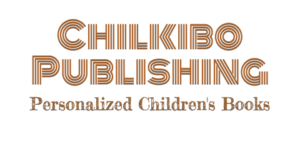Books are a gateway into another dimension – a world often viewed only through the mind’s eye. However, if there are pictures that provide even just a glimpse of this realm, why aren’t more of them shown?
Not all books have pictures, mainly because of the expense. Printing images in books can be costly because of the need to hire an illustrator, print using high-quality paper, and format the books properly. These added costs make the final book more expensive and harder to market.
Often, picture books are designed for children only. Thus, most adult books tend to be quite plain in comparison, filled with bulky text. I’ll explore why this is so, and I encourage you to keep reading this article to discover the reasons.

Pictures in Books Are Costly
Producing a book is not easy or expensive. It’s not just the writing process that’s exhausting. The publishing and printing part needs to be financially viable – there are:
- hidden publishing expenses
- small profits
- expensive materials and costs (paper, ink, printing, shipping, labor).
Publishing, printing, and selling books is a business, and those involved need to ensure that they can get back what they invested. Picture books entail more investment, thus, making them more expensive. Most publishers will not have them unless necessary, especially if the author is relatively new.
The Author or Publisher Would Need To Hire an Illustrator
Many entities are already involved in a basic book:
- The author
- Publisher
- Editors
- Printing business.
If a picture is needed, one more person is called in – a book illustrator.
Not all writers are visual artists and vice versa. Even if the author is a visual artist, a publisher might prefer hiring an experienced illustrator for quality assurance.
Making pictures for a book needs professional creativity and skill because these images must be of good quality. They must add to the book’s value and essence and not just be redundant images of scenes that can be fully imagined while reading. Thus, abstract art may be used instead – these add depth without being too literal or redundant.
Illustrators are often paid with either a flat fee or through an advance with royalties. Both involve a significant investment, and if there is no assurance that the illustrated book will take off and pay off such investment, there would be no support for it.
Additionally, if a map is needed, not just an illustrator is essential. A cartographer or map expert would be consulted. For the University of Georgia Press, they can secure cartographic services charged to the author or let the author choose a cartographer. However, if the author chooses one, the Press must talk and approve with them first before work can be done.
The Author or Publisher Would Have To Secure Permissions for Pictures
Sometimes, a book would not have images or graphics from scratch. Instead, the author might prefer this existing photo to be used. However, that would mean securing permissions or rights for that photo, especially if it is not in the public domain. Otherwise, they might get entangled in copyright issues.
Securing those permissions may take time. The owner of the rights may even reject you. If you cannot ensure those permissions in time, the pictures will not be part of the final book.
It Is Expensive To Print Pictures
Even if you get an illustrator or secure permissions, the next part is still not easy. Printing pictures is not cheap, especially colored images. Not only because of the more types and amount of ink consumed but also because the high-quality paper is essential. Since paperbacks are often printed using relatively low-quality paper, they rarely contain images.
Furthermore, if you opt to have colored images, that would often mean having the whole book printed in color, even if the text is black and white. Since an average book has 200 to 400 pages, printing this length in color would be pretty expensive.
You might think, why not print the text pages black-and-white and the images colored? Colored and black-and-white pages are challenging to bind afterward since the colored pages need to be inserted onto the text pages. This requires effort and may be prone to error.
Thus, Archway Publishing, like other publishers, noted that although they can print colored images for color printing, the same pictures appear grayscale in a black-and-white book since they cannot simply insert colored images.
Formatting the Book Can Be a Hassle
Aside from all of those factors, there is also the inconvenience of formatting if pictures are added. They must be placed so that they don’t obscure words, make the page look awkward, etc. If the author wants them scattered or near a specific text, that would be more difficult than just having an image gallery, which most publishers prefer.
The issue of book formatting is even more pressing for ebooks. Ebooks have to be readable and visually appealing on iPad, Kindle, phone, laptop, etc. This requires more effort as images can make it harder for the text to adjust to the changing devices.
Illustrated Adult Books Are Harder to Market
Even if you can get all the investment and effort you need into making a finished illustrated book; it would be hard to market, especially to an adult audience. Children’s books are often illustrated because kids love pictures.
On the other hand, adults would instead buy a cheap paperback rather than an expensive illustrated edition from an unknown author. Furthermore, there’s also the stigma surrounding adults reading picture books because these are often perceived as for children only.
Thus, a book would often have to become famous first before it becomes illustrated. Classics, like Don Quixote, would have illustrated editions made because the additional graphics make it more appealing to an audience that is already familiar with the story. Publishers are more assured of getting their profit because this illustrated version stands out against the other text prints.
A Good Novel Does Not Need Pictures
In most readers’ and writers’ forums, this sentiment was often repeated – a good novel (or book) would not need pictures in the first place. The art of storytelling relies on the writer’s ability to paint a vivid picture using descriptive words in the reader’s imagination. If images are added, they would likely not add to the story’s value and might even be redundant.
Final Thoughts
Pictures in books help greatly in visualization and make it enjoyable. However, that does not mean pictureless works have less to offer than picture books.
These kinds of books, which are often cheaper and more accessible, make use of an even better visualizer than pictures – our imagination. They give us the freedom to escape reality and remain in touch with our creative side.


